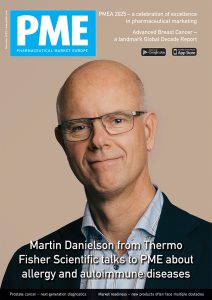
Latin America bounced back from the 2008 financial crisis and its economy is stronger than ever, due to GDP increases, high employment rates and the growth of a middle class with purchasing power.
This rosy economic picture is propelling the pharma markets along with the burden of disease shifting towards lifestyle chronic conditions.
According to BMI, the Latin American pharma market is valued at $70bn in sales and IMS health claims 16 per cent growth was recorded in 2010, particularly across the largest markets, Brazil and Mexico, but also in other countries.
Venezuela is now the third largest and the fastest growing market in the Latin American continent growing at about 20 per cent. Most governments in the region have been broadening access to healthcare to populations that combine high fertility rates with longer life expectancies.
Espicom Business Intelligence predicts that the region’s eight major markets — Brazil, Mexico, Argentina, Chile, Colombia, Cuba, Peru and Venezuela — will represent a retail value of $80bn in 2013, up from $50bn in 2010.
Sanofi, followed by Novartis and Pfizer are the three top companies in Latin America, but local EMS, Ache Labs, Eurofarma, Roemmers and Neo Quimica – all generics firms – are among the 20 largest by market share.
Market access varies widely across the region, but the trend is towards more regulation and penetration of branded medicines, as countries comply with international treaties, such as NAFTA and TRIPS, and bilateral free trade agreements.
Each country is unique and multinationals must tailor their approach and be sensitive to national variations regarding sales. Internet adoption is higher than Africa and the Middle East and it is estimated to reach 42.6 per cent in 2012, according to eMarketer. However many influencers still prefer traditional face-to-face interaction with pharma reps.
Brazil: the pharma giant
The largest market, Brazil grew by 10 per cent in 2011 and is worth $26bn, according to IMS Health figures. The middle class is expanding rapidly, with millions joining every year. The government’s aspiration for the National Health Service has been high quality for all and although in need of reform, the system is trying to increase access to medicines, having added drugs for diabetes and heart disease to the full reimbursement list.
The government’s expenditure in healthcare of 9 per cent of GDP is the highest in Latin America and half a percentage point short of the Organisation of Economic Cooperation and Development (OECD) average. The former President Lula da Silva’s policy of favouring domestic industry has continued under the current leader Dilma Rousseff.
Although Brazil is in agreement with international patent protection treaties, the authorities reserve the right to break patents in the case of national health emergencies and they have manufactured generic versions of AIDS drugs to treat patients.
Generics are a large and growing segment with strong financial support from the government for national firms.
Mexico: pricing pressures
Mexico is the second largest pharma market in Latin America and 10th in the world generating revenues of $12bn. The Mexican market has undergone several changes in recent years with the government committed to offering treatment of chronic conditions, increasing uptake of generics and a stricter regulatory environment.
The government is expanding healthcare coverage, but is also looking for ways of making expenditure more efficient, specially with a tighter control on the sale of antibiotics, now under a national register system and sold only on prescription.
Pressures on pricing remain a threat to pharma growth in the region, which is likely to be dealt another blow with 40 blockbusters coming off patent in Mexico this year.
Since 2008, more foreign companies such as Takeda, Daiichi Ranbaxy and others have been allowed to set operations in the country, increasing competition and consolidation. In addition, Mexico has had to reform its intellectual property laws to comply with NAFTA and this has led to an increase in foreign investment. The largest companies are Probiomed, Silanes and Senosiain.
Argentina: domestic dominance
Argentina has opted for protectionist policies to boost domestic companies that now have a market share of 57 per cent in revenue, according to Global Data. Over 70 per cent of medicines consumed in Argentina are manufactured in the country, although multinationals are slowly penetrating the market through licensing and acquisition of small companies.
The collapse of the economy in 2002 has had a severe impact on the pharmaceutical sector, but government schemes to provide universal healthcare mean that expenditure remains robust.
Venezuela: rapid growth in a challenging environment
With the re-election of President Hugo Chavez and a booming economy, mainly due to oil exports, Venezuela is set to continue its current policies. However, there are deficit problems and inflation is expected to remain high, which impacts on the pharma market.
Last August, the Venezuelan government tightened regulations governing the import of pharmaceutical products and has stripped the sector of its ‘priority’ status: a move criticised by the industry body Camara de la Industria Farmaceutica (CIFAR), concerned about price increases and drug shortages.
Public investment in the sector is dropping, but social schemes to expand universal healthcare, such as Barrio Adentro (Inside the Neighbourhood: a Bolivarian national social welfare programme introduced by Chavez) supported by thousands of Cuban doctors and a strong economy ensure good care and a prosperous healthcare sector.
Chile and Peru: small but significant
Although much smaller than Brazil and other big players, Chile and Peru are growing in terms of GDP and are becoming the ‘go to’ place for clinical trials. They are politically stable and economically sound offering opportunities for investment.
Chile is considered a role model for economic reform and trade liberalisation. In May 2010, it became the first South American country to join OECD and it has the highest income per capita (US$ 14,900 PPP) in the region.
The pharma market, led by domestic companies, tends to suffer from over-protectionism, but will benefit from growing healthcare expenditure and moves to comply with TRIPS. The trend is for more production and export of licensed branded products, as opposed to generics. According to IMS Health the market was worth $1.5bn in 2010 and grew by almost 16 per cent.
Stricter regulatory measures were introduced by newly created Instituto de Salud Pública de Chile (ANAMED), the medicines agencies overseeing bio-equivalence and GMP. However patent and data protection are still an issue. The US has urged the Chilean government to strengthen legislation to enforce patents but the country remains on the Priority Watch List.
Peru is also a stable market with a growing population.
This rosy economic picture is propelling the pharma markets along as the burden of disease shifts …
In 2009, the Peruvian government ratified a Free Trade Agreement with the US, which has boosted the pharma market, dominated by national companies and doing business mainly with other Latin American partners.
Pharmaceutical sales reached $1bn in 2010 with growth of 10 per cent. The authority of the agency responsible for quality control of medicines has also been strengthened with new legislation. As with Chile, GMP certification and bio-equivalence are compulsory for generics.
Outlook
The outlook for the Latin American market is very positive, given the sheer size of it and the population growth projected. Challenges include potential cost-containment measures to be employed in countries such as Brazil and Argentina, local industry protection and over-reliance on GDP growth.
Generics and biologics are among the strongest areas. Even if standards vary, the tendency is for ‘similar drugs’ without proven bio-equivalence to be phased out.
In Mexico, Venezuela and Peru, public healthcare coverage is broadening, which will benefit the pharmaceutical industry. Clinical trials are also a growing sector, with huge patient pools.
According to IMS Health, the Latin American market will double in size from 2011 to 2015. Brazil is the most attractive market, but steady growth in other countries make Latin America a healthy proposition for investors, particularly when compared with other mature but stalling markets.





